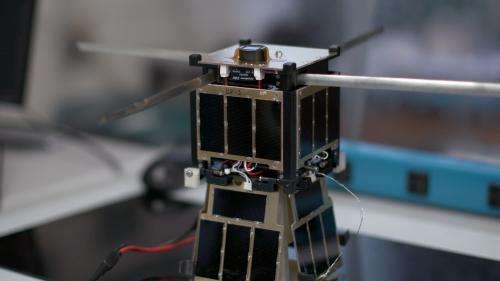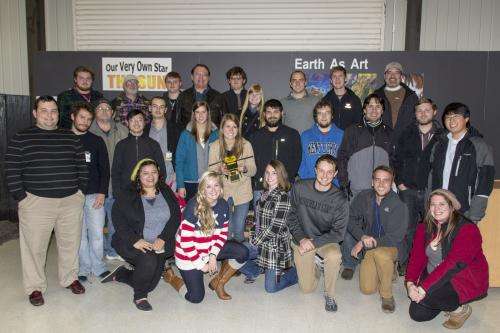Student-built satellite sends data from space

A tiny satellite, dubbed KySat-2, built by students at the University of Kentucky and Morehead State University is currently orbiting about 300 miles above the Earth, circling the planet every 90 minutes. The satellite, launched in November 2013, was one of 11 CubeSats built by students across the country and part of NASA's Educational Launch of Nanosatellite (ELaNa) missions.
KySat-2 was built to the CubeSat standard, which restricts its volume to one liter (about a 4-inch cube). Despite its tiny size, KySat-2 is loaded with complex electronics, including an onboard computer, a digital camera, lithium-ion batteries, solar electric panels, and a ham radio transceiver. The UK students used 3-D printers to create several components for KySat-2.
Alex Clements, a UK senior majoring in mechanical engineering who worked on the 3-D printed parts, says almost all of the hardware was designed and built in-house.
"Morehead State designed the electrical power system, UK worked on the command and data handling system, the frame, structure, and then the camera system," he said.
The satellite sends "beacons" every 15 seconds, explains Mary Fralick, also a UK mechanical engineering senior.
"It will tell us that it's on, it will tell us what's working, what's powered on, what's powered off," she said. "Ground stations all over the world can pick up that kind of data and send it to us."
KySat-2 will transmit photos from its onboard camera, as well as sensor data showing the strength of Earth's magnetic field, says Jason Rextroat, a UK grad student in electrical engineering.
"We expect to get about a year, a year-and-a-half of data before the batteries have degraded so much that they're not really useable," he said. "Then the satellite itself will most likely reenter the atmosphere and burn up after around two years."
James Lumpp, associate professor in the Department of Electrical and Computer Engineering and director of the Space Systems Laboratory where these students work, says working on this project is good preparation for an aspiring engineer.

"NASA is always engineering in the extreme where the missions are very high profile, a lot of press, a lot of exposure, a lot of people see your failures very dramatically if something doesn't work," he said. "You have to get things right, so the processes are very proven, very effective. So, for the students to learn those techniques and those processes, that is going to help them in anything they do in the future."
Provided by University of Kentucky


















